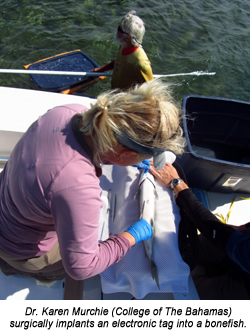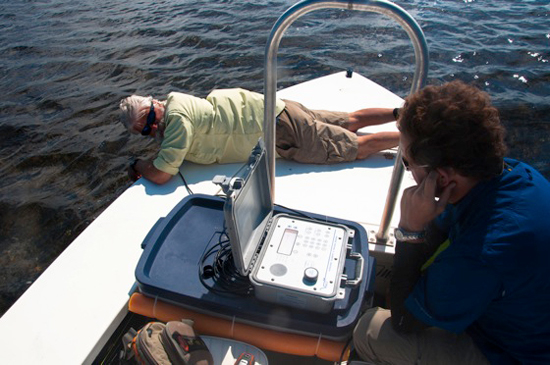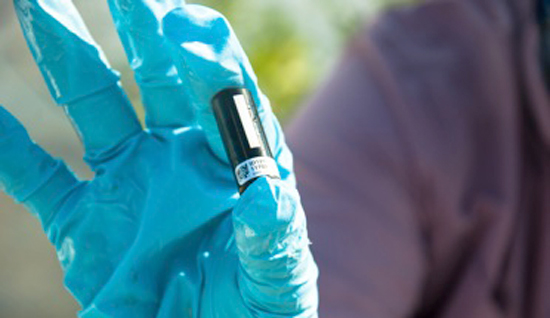(NOVEMBER 19, 2013—Eleuthera, Bahamas) Bonefishing in the Bahamas contributes nearly $141 million to the economy annually. Despite the economic importance of this sportfish, there remain a number of gaps in the understanding of some basic bonefish ecology. For some time now, local Bahamian companies involved in the bonefishing industry have been working with global experts to gain a better understanding of the life cycle of bonefish and the ecosystems in which they live. By pairing local knowledge with international expertise, the aim is to gather data that will help conserve and protect bonefish for future generations of Bahamians and visitors.
 During the month of October, a study was launched in Grand Bahama that involved collaboration between Bahamian organizations (i.e., the Cape Eleuthera Institute, the College of The Bahamas, H2O Bonefishing, and the Bahamas National Trust) and international partners (i.e., the Fisheries Conservation Foundation, the University of Illinois, and Carleton University). Using the latest technologies, the team surgically implanted electronic tags into adult bonefish. Using strategically deployed listening stations around the island to determine their movements during the spawning season, the research team will be able to determine important bonefish spawning migration routes. That information will then be used to help form conservation and management strategies to keep the fishery healthy for years to come.
During the month of October, a study was launched in Grand Bahama that involved collaboration between Bahamian organizations (i.e., the Cape Eleuthera Institute, the College of The Bahamas, H2O Bonefishing, and the Bahamas National Trust) and international partners (i.e., the Fisheries Conservation Foundation, the University of Illinois, and Carleton University). Using the latest technologies, the team surgically implanted electronic tags into adult bonefish. Using strategically deployed listening stations around the island to determine their movements during the spawning season, the research team will be able to determine important bonefish spawning migration routes. That information will then be used to help form conservation and management strategies to keep the fishery healthy for years to come.
For more information contact:
Aaron Shultz (The Cape Eleuthera Institute) – (242) 334-8552
Dr. Karen Murchie (College of The Bahamas) – (242) 688-5933
Jason Franklin or Greg Vincent (H2O Bonefishing) – (242) 727-1655 or (242) 359- 4958
Or visit www.fishconserve.org and/or www.ciebahamas.org

Dr. Jeffrey Stein (University of Illinois) and Dr. David Philipp (Fisheries Conservation Foundation) listen for tagged bonefish using a mobile tracking device.

An electronic tag (transmitter) ready to be implanted into an adult bonefish captured on Grand Bahama.





